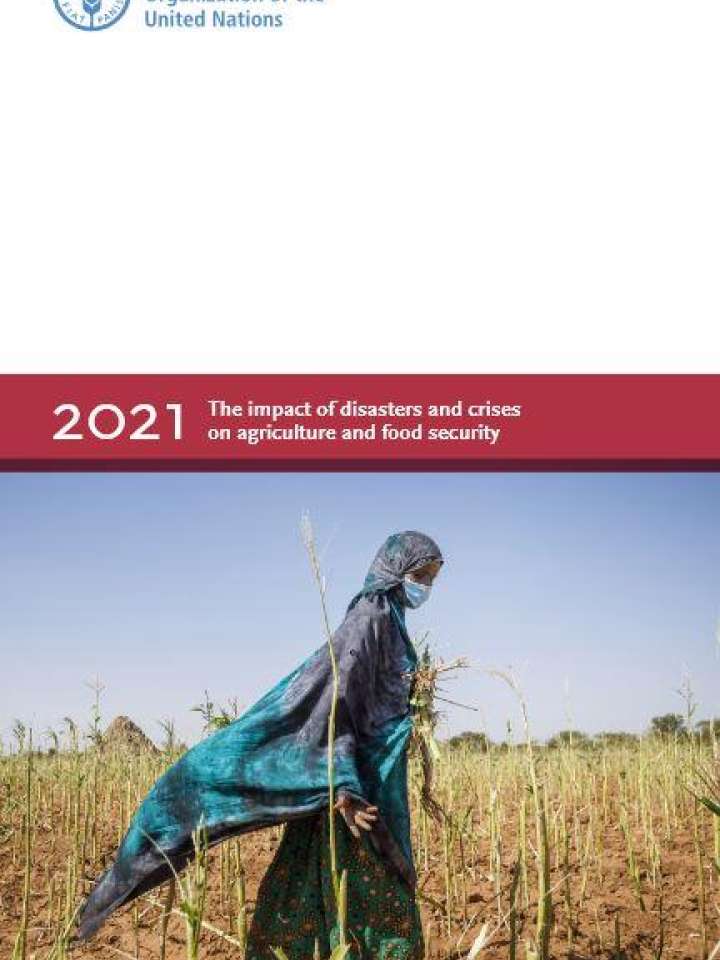The impact of disasters and crises on agriculture and food security: 2021
This report makes a powerful case for investing in resilience and disaster risk reduction – especially data gathering and analysis for evidence-informed action – to ensure agriculture’s crucial role in achieving the future we want. On top of a decade of exacerbated disaster loss, exceptional global heat, retreating ice and rising sea levels, humanity and our food security face a range of new and unprecedented hazards, such as megafires, extreme weather events, desert locust swarms of magnitudes previously unseen, and the COVID-19 pandemic.
The report constitutes a further step towards bridging persistent knowledge gaps and fostering a better understanding of how agriculture is affected by disasters. Agriculture underpins the livelihoods of over 2.5 billion people – most of them in low-income developing countries – and remains a key driver of development. At no other point in history has agriculture been faced with such an array of familiar and unfamiliar risks, interacting in a hyperconnected world and a precipitously changing landscape. And agriculture continues to absorb a disproportionate share of the damage and loss wrought by disasters. Their growing frequency and intensity, along with the systemic nature of risk, are upending people’s lives, devastating livelihoods, and jeopardizing our entire food system.
Explore further
